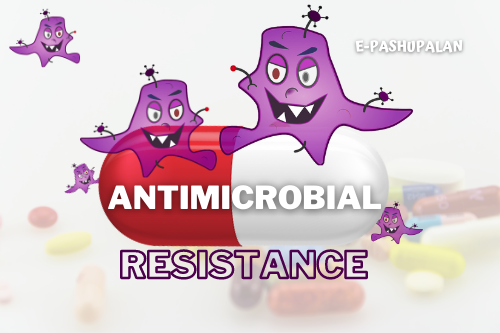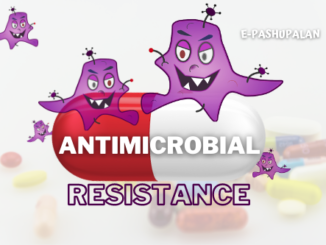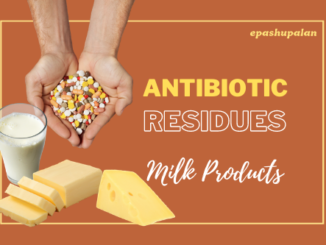No Action today, No Cure Tomorrow
The threat of antimicrobial resistance including multidrug resistance is growing at an alarming rate and the condition is getting aggravated in developing countries due to indiscriminate use of antimicrobials, so the path of antibiotic development is challenged at every step by the emerging microbial resistance. Development of superbugs have further complicated the effective control strategies. Though use of antimicrobials is necessary and justified in disease condition, but widespread unnecessary and excessive use makes the condition worse. Non-compliance use of antimicrobials leads to many repercussions upon resistance. Thorough understanding of resistance mechanism and innovation in the new drugs and vaccines is needed to overcome this challenge. Thus, antimicrobial resistance is a major point of concern as it is associated with very high death rates and fear of progression to pre-antibiotic era. It can hamper infectious disease control programmes, increase in health care costs and diminish health care gains.
In the developing countries poverty is the major core factor of antimicrobial misuse. On the other side even, the wealthy patients sometimes miss the doses either by mistake or consciously, especially in those cases where clinical signs and symptoms begin to subside after an initial favorable therapeutic response, which leads to development of resistance.

The self-medication is a common practice in developing countries where patients take the antimicrobials without any prescription and through unregulated supply chains. The condition is created even more worse when some patients seek their first line of treatment from some traditional healers who give them some combination herb therapy of unknown composition, potency and efficacy which may enhance the pathogen fitness and contribute in development of resistant strains of pathogen.
Causes of Antimicrobial Resistance
-
Quality and Dispensing of Drugs
As in the developing countries drugs can be purchased without any medical prescription and are usually dispensed on streets by untrained persons due to lack of proper regulations in the sale of antimicrobials which is major driving force in the access and misuse of antimicrobials.
It is also seen that many antimicrobials dispensed are of questionable pharmacological quality it can be due to adverse climatic conditions in different regions, poor storage which increases the risk of degradation of drug, or some profitable aspects of pharmaceutical companies. Due to these factors the medicines contain less than stated composition which implies that patient consumes less than appropriate composition of dose required against the pathogen. The influx of substandard antimicrobial preparation of reduced potency also results in exposure of pathogen to sub- therapeutic concentrations of drug which leads to development of resistance.
-
Healthcare Professionals
Healthcare providers play important role in treatment as well as prevention of disease. The prescription varies among the physicians and in some cases antimicrobial prescriptions are inappropriate either wrong drug or dosage or unnecessary antimicrobials. Due to low doctor-patient ratio in most developing countries, doctors have inadequate time for proper communication with patients and for studying meaningful recent research. This leads to treatment with broad spectrum antimicrobials which contributes to development of resistance as the drug creates selective pressure not only on pathogen but also on patient’s microbiota.
-
Patients
Patients sometimes miss doses either by mistake or deliberately, this leads to exposure of surviving microbes to a subtherapeutic concentration of drug and thus increases the chances of developing resistance.
-
Non – Human use of Antimicrobials
Antimicrobial are used as prophylaxis or to treat the disease in animals or as growth promoter in animal breeding. They are also used as additives in fruits, vegetables etc. antibiotic containing manure is used on farmland and industrial process. Use of antimicrobial agent in food producing animals has deteriorating consequences on both human and animal health as it can develop resistant bacteria. The bacteria with resistant genes can be transferred to humans through consumption of food, by contact of human to these animals or through environmental spread. So, the injudicious use of antimicrobials exerts a selection pressure which can Favour survival of resistant strains over susceptible ones this leads to increase in resistant bacteria within microbial community.
-
Improper Surveillance and Lack of Proper Antimicrobial Susceptibility testing
All over the world, surveillance is considered as strength of the programmes directed towards antimicrobial resistance and the antimicrobial susceptibility testing is very essential to provide information on resistance, but due to lack of capacity and facility it is not performed in rural laboratories. Surveillance needs to be conducted regularly because resistance can vary from region to region over time duration.
Antimicrobial Resistance Control Strategies
As the problem of antimicrobial resistance is getting aggravated the long – term solution should be focused on methods to prevent the emergence of resistance as well as to prevent the spread of resistant organisms from one person to another.
-
Hygiene and Sanitation
Unhealthy environmental conditions like crowding and poor sanitation contribute to the spread of resistant microorganism. Transmission of resistant pathogen is facilitated by contaminated food, water or vectors and by person-to-person contact. By improving the basic hygiene, spread of resistant bacteria can be reduced.
Improving the prevention and control measures against infections in the hospitals will help in reduction of nosocomial spread of resistant pathogens. Some recommended measures to prevent and control infection in a health-care facility like establishing an infection prevention and control committee, good hand hygiene practices by alcohol based hand rubs, effective diagnosis and treatment of infection, rational antimicrobial use, surveillance of antimicrobial quality and supply chain and good microbiology practices like accurate collection, handling of specimen to fast reporting with standard microbiology practices are very effective to restrict the spread of infection and thereby antimicrobial resistance.
-
Proper Vaccination, Surveillance and Guidelines for Use of Antibiotics
Vaccines are primary source of prevention from infectious diseases. Prior vaccination reduces the severity of diseases as it increases the threshold load of pathogen required for infection. Proper surveillance is very essential as it generates data on antimicrobial use and antimicrobial resistance which is essential in improving antimicrobial prescribing, development of standard treatment guidelines and formulating infection control policies. Appropriate change in antibiotic is also required as per the sensitivity of microbe. So, antibiotic guidelines are therefore must optimize antibiotic selection with their dosing, route of administration and duration of therapy.
-
Alternative Therapies
Use of bacteriophage is a necessary alternative to the conventional antibiotics. These are bacterial viruses which invade the bacteria and causes their lysis.
Probiotics also called as fecal transplant therapy should be used. In this the fecal material from pathogen free healthy donors is taken to repopulate the microbiota of recipient. Probiotics are considered to destroy the pathogenic microorganisms by producing some antimicrobial compounds like some organic acids and improves the gastrointestinal microbial environment. They adhere to the intestinal mucosa and thus preventing attachment of pathogens and competes with pathogen for nutrients and stimulate intestinal immune responses and also improves digestion and absorption of nutrients. Some common probiotics include– bacillus, lactobacillus, Bifidobacterium, Lactococcus etc.
-
International Measures and Role of Stake Holders
As a global problem antimicrobial resistance is now well accepted by various stakeholders. World Health Organization has recommended approaches to overcome the rising issue of antimicrobial resistance like increased collaboration between government and non-governmental organizations, professional groups and international agencies, incentives for the research and development of new drugs and vaccines according to the mechanism of pathogens.
Antimicrobial resistance control cannot be sole responsibility of medical professionals and scientists. The general population and other stake holders have a central role to play. In every country government should consider antimicrobial resistance as a public health priority issue. Policies and regulations should be put in place to enforce the prudent access and use of antimicrobials.
The population needs to be educated on the threat of antimicrobial resistance, so the media professionals need to get adequate training on how to convey medical and scientific information in local language to inform the population.
So, the antimicrobial drug resistance is a natural phenomenon, but it is exacerbated by underuse and overuse of antimicrobials. The irrational use of antimicrobials is a complex and multifactorial problem in developing countries and a proper understanding of the problem is necessary for effective control policies. Microorganisms develop resistance by various mechanisms and infection caused by resistant microbes fails to respond to treatment and thus selection of resistant strains occurs. Veterinary antimicrobials also contribute to development of resistance in human. The development of drug resistance can be prevented by discouraging indiscriminate, inadequate and unduly prolonged use of antimicrobial agents. This would minimize selection pressure and resistant strains will get less chance of propagation which will ultimately safeguard the public health. This can also be achieved to some extent by reducing the amount of antibiotics used in animals and discontinuing the practice of routine adding of antimicrobial growth promoters in animal feed. Alternative to this, there should be good managemental practices that reduce likelihood of infection and also increase production efficacy. Established steps to prevent and control infectious diseases include improved husbandry practices, quarantine and other biosecurity measures and proper vaccination. Other measures include genetic selection to enhance disease resistance, use of antiseptics such as teat dipping to prevent mastitis, vector control and use of probiotics and other competitive organisms to exclude pathogen. Moreover, control of viral and other infections reduces the chances of secondary bacterial infection, thus reducing need for antimicrobial therapy.








Be the first to comment